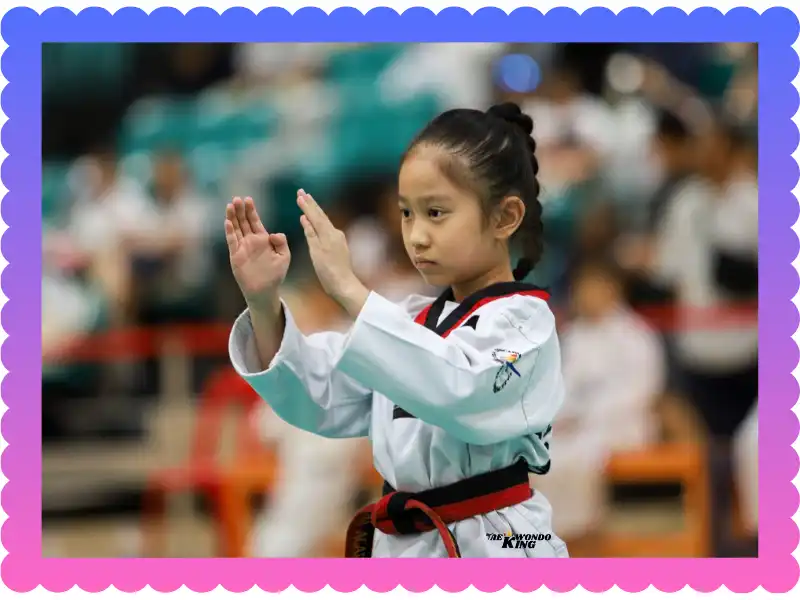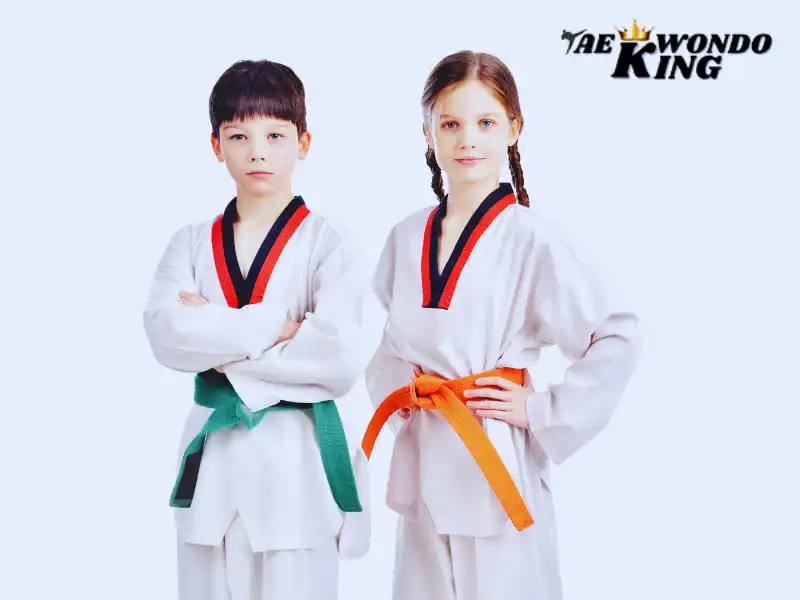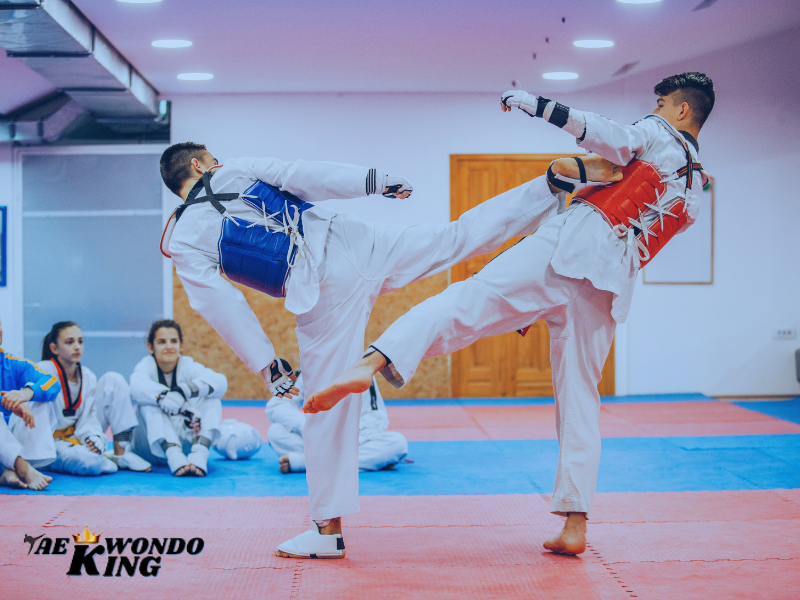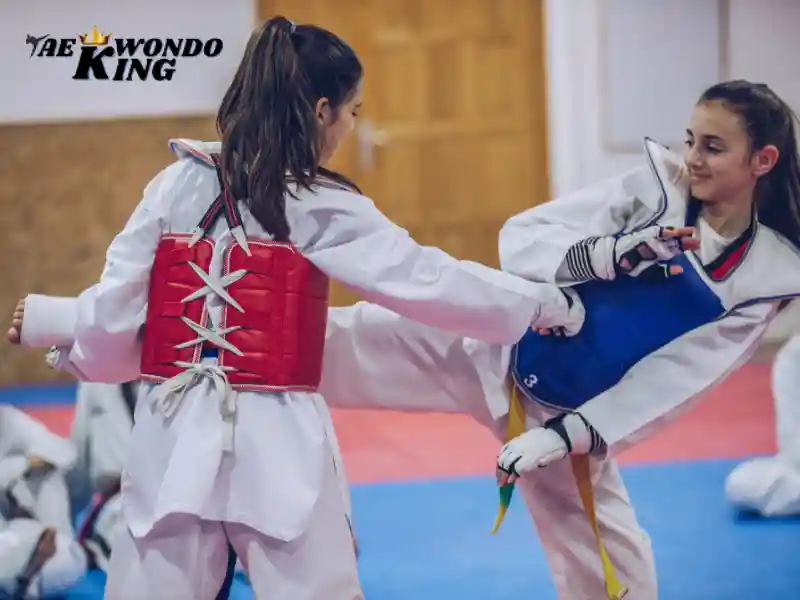
Ever watched a teen nail a spinning hook kick and thought, “Wow, I want that confidence”? Taekwondo is a game-changer for teens, blending discipline, fitness, and self-defense into one dynamic package. As a martial arts enthusiast who’s seen kids transform in the dojang, I know it’s more than just kicks, it’s a path to growth. This article dives into why teens should try Taekwondo, its benefits, and how to get started in 2025. Ready to unleash your teen’s inner warrior? Let’s kick it off!
Taekwondo, a Korean martial art known for its high-flying kicks and disciplined training, is a perfect fit for teens navigating the chaos of adolescence. It’s not just about breaking boards, it’s about building character, fitness, and skills that last a lifetime. This guide explores why Taekwondo is ideal for teens, its benefits, how to get started, and tips for success in 2025. Whether your teen is shy or a fireball, Taekwondo can spark something amazing.
See the latest Top-Rated Taekwondo Foot Protector Price Today Used by Champion Players.

Why Taekwondo for Teens?
Taekwondo is like a gym class, therapy session, and superhero training rolled into one. For teens aged 13-18, it offers a structured environment to channel energy, learn self-defense, and grow mentally and physically. I’ve seen teens who started timid leave classes standing taller, ready to face bullies or exams with equal grit. It’s accessible for all fitness levels and teaches practical skills for real-world challenges.
Benefits of Taekwondo for Teens
Taekwondo transforms teens in ways that go beyond the dojang (training hall). Here are the top perks:
- Physical Fitness: Improves strength, flexibility, and coordination through kicks, drills, and sparring. Studies show martial arts boost cardio health by 20% in teens.
- Confidence: Mastering a roundhouse kick or earning a new belt builds self-esteem. My cousin went from quiet to leading class drills after a year.
- Discipline: Strict training fosters focus and respect, helping with schoolwork and life goals.
- Self-Defense: Teens learn to defend against grabs or strikes, boosting safety and awareness.
- Stress Relief: Sparring and forms (poomsae) are outlets for teen angst, reducing anxiety.
- Social Skills: Group classes build friendships and teamwork, countering social isolation.
I watched a shy teen in my local dojang become a black belt leader, Taekwondo’s structure works wonders.
Getting Started with Taekwondo
Starting Taekwondo is simple, but choosing the right path sets teens up for success. Here’s how:
- Find a Dojang: Look for schools affiliated with World Taekwondo (WT) or International Taekwon-Do Federation (ITF). Check Google or Yelp for local dojangs with teen programs.
- Gear Up: Beginners need a dobok (uniform, ~$30-$50), a white belt (often included), and later, sparring gear like a Taekwondo foot protector (~$20-$40).
- Try a Class: Most dojangs offer free or low-cost trial classes. Teens can test the vibe before committing.
- Cost: Classes run $50-$150/month, depending on location and frequency (2-3 sessions/week).
My first class was a sweaty blur of kicks, but the instructor’s encouragement hooked me. Teens should visit a few dojangs to find a supportive environment.
Types of Taekwondo Training for Teens
Taekwondo offers varied training styles to keep teens engaged:
- Sparring: Controlled combat with protective gear (e.g., Taekwondo foot protectors, chest guards) teaches defense and strategy. WT-style focuses on kicks.
- Poomsae (Forms): Choreographed patterns build technique and focus, great for non-competitive teens.
- Breaking: Smashing boards hones precision and power, teens love the thrill.
- Self-Defense: Practical moves like escaping grabs prepare teens for real-world threats.
I saw a teen grin ear-to-ear after breaking her first board, it’s a confidence booster like no other.
Choosing the Right Dojang
Not all dojangs are equal. Here’s what I look for:
- Certified Instructors: Ensure they’re accredited by WT, ITF, or ATA for quality teaching.
- Teen-Friendly Classes: Look for age-specific groups to match skill and energy levels.
- Safe Environment: Check for padded floors and required gear like Taekwondo foot protectors.
- Positive Vibe: Instructors should encourage, not intimidate. Visit during a teen class to observe.
I once joined a dojang with a drill-sergeant vibe, left after a week. A supportive instructor makes all the difference.
Tips for Teens in Taekwondo
To thrive in Taekwondo, teens should:
- Stay Consistent: Attend 2-3 classes weekly to build skills. Progress feels slow, but it adds up.
- Practice at Home: Drill basic kicks or stretches to speed up learning.
- Wear Proper Gear: A Taekwondo foot protector prevents injuries during sparring.
- Set Goals: Aim for belt tests (every 3-6 months) to stay motivated.
- Have Fun: Enjoy the journey, friendships and small wins keep it exciting.
I practiced front kicks in my backyard as a teen, it shaved weeks off my yellow belt test prep.
Challenges and How to Overcome Them
Taekwondo isn’t always easy for teens. My Common hurdles include:
- Physical Fatigue: Intense classes can tire beginners. Start slow and build stamina.
- Frustration: Complex kicks like spinning heels take time. Focus on small improvements.
- Time Management: Balancing school and training is tough. Schedule classes like homework.
- Cost: Gear and fees add up. Look for dojangs with payment plans or used uniforms.
I struggled with side kicks early on but broke through with extra practice. Patience is a teen’s best friend.
Why Taekwondo Matters for Teens
Taekwondo is more than a sport, it’s a life tool. It teaches teens to stand up to bullies, stay calm under pressure, and push past setbacks. A 2023 study found martial arts reduce teen anxiety by 15% while boosting focus. Whether your teen wants to compete or just get fit, Taekwondo builds skills for school, relationships, and beyond.
See the latest Top-Rated Taekwondo Foot Protector Price Today Used by Champion Players.

Getting Involved in 2025
In 2025, Taekwondo will be more accessible than ever. Online platforms like YouTube offer beginner tutorials, but in-person dojangs are best for teens to spar and bond. Check local community centers for affordable classes or ask about scholarships. Events like the World Taekwondo Junior Championships inspire teens to aim high.
Final Thoughts
Taekwondo for teens is a journey of sweat, growth, and empowerment. From mastering a Taekwondo foot protector in sparring to earning a black belt, it builds confidence and resilience. Start with a trial class, find a great dojang, and watch your teen soar. Have a teen in Taekwondo? Share their story, I’d love to hear what kicks they’re crushing!
FAQs
Yes, 16 is a great age to start Taekwondo; you’re coordinated enough for full training and can progress quickly.
Absolutely, it boosts fitness, confidence, discipline, and self-defense skills, perfect for teen development.
No, 15 is not too old; many start at this age and excel due to physical maturity and focus.
No strict age limit; Taekwondo classes welcome kids as young as 3 and adults into their 60s or older.
Yes, 18 is fine; you can build strength and compete or train for personal growth at this age.
Classes are tailored for various ages: 3-6 (tiny tigers), 7-12 (juniors), 13-18 (teens), and 18+, with adult programs.
Yes, 14 is an excellent age; teens at this stage benefit from improved focus and social skills through training.
Risk of minor injuries (e.g., bruises), high costs for gear, time commitment, and limited focus on grappling or ground fighting.
Yes, if they started young (e.g., age 8) and trained consistently, but it’s rare due to the time required (4-5 years minimum).
Low risk with proper instruction and gear (e.g., foot protectors); minor bruises or sprains are possible but serious injuries are rare.
See the latest Top-Rated Taekwondo Foot Protector Price Today Used by Champion Players.


Founder, Owner, and CEO of TaekwondoKing.
He is one of the top 100 martial artists in the World and among the top 20 referees in Bangladesh.
Ehatasamul Alom is an esteemed Kukkiwon Certified Taekwondo 3rd Dan Black Belt with over 15 years of experience in this dynamic martial art. Born in Rajshahi, Bangladesh, Ehatasamul’s journey with Taekwondo began at the tender age of seven. His passion led him to compete at national and international levels, where he has bagged numerous awards and honors. He is also a member of the Taekwondo National Referee Panel.
With a Bachelor’s degree in Sports Science from the prestigious Rajshahi University, Ehatasamul has a deep understanding of the technical and scientific aspects of martial arts and some other martial arts.
In 2022, Ehatasamul created the “TaekwondoKing.com” to share his knowledge, Free Resources, Values, and Real experiences. His articles focus on Taekwondo training techniques, competition strategies, Sport Products Reviews, and the art’s rich history and philosophy. He also writes about the importance of mental fortitude and discipline, key aspects of his teaching philosophy. He has already launched many sports, Taekwondo, and health-related Free online tools. His goal is to inspire both beginners and seasoned practitioners worldwide through insightful and engaging content.
If you need any help, contact Ehatasamul Alom at any time.




